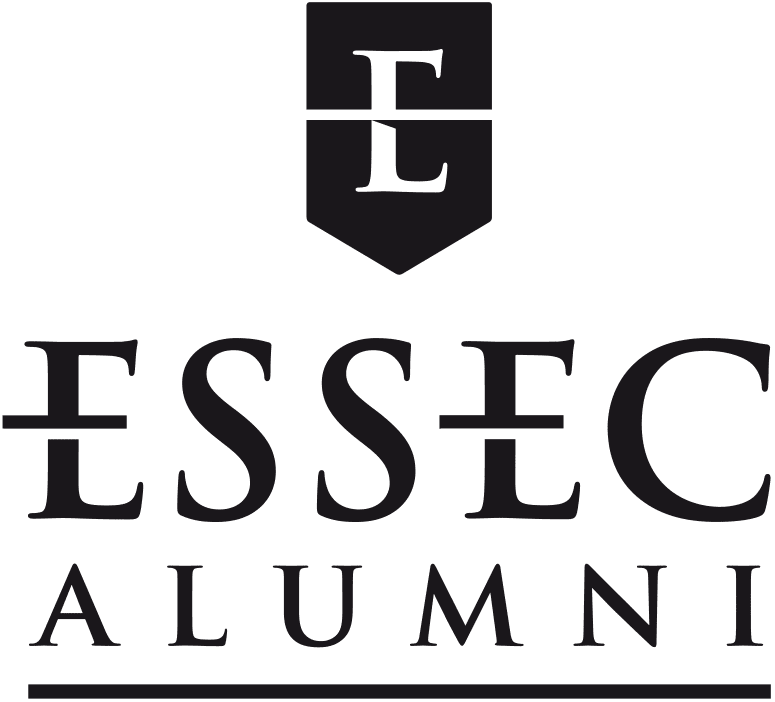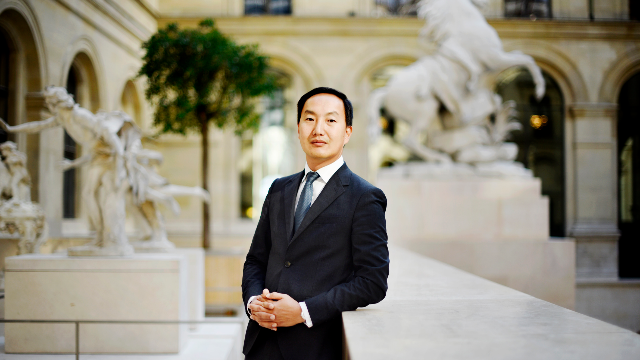Reflets Mag #141 | Yann Le Touher (E07) At the Louvre: The Art of Business
In the latest issue of Reflets Magazine, Yann Le Touher (E07), Head of Development, Brand Licensing & Commercial Partnerships at the Louvre, tells us about the vital role these sources of revenue play for the world’s biggest museum, and for the culture sector as a whole. Here's a free online translation of the article.
Reflets Magazine: In terms of patronage, in what ways does the Louvre differ from the Musée d’Orsay and the Pompidou Centre, where you have also worked in the past?
Yann Le Touher: The Louvre is a museum for everyone: it’s home to national collections that belong to everyone in France, but 80% of its visitors come from outside of France. This ability to reach every demographic and the museum’s international reputation are what differentiates us from the rest.
RM: The Louvre has been launching innovative patronage policies for 15 years now. What initiatives have you launched recently?
Y. Le Touher: The Louvre was the first museum in France to form a corporate circle, to make a foray into crowdfunding, to create an endowment fund, and launch “capital campaigns” for major projects, just like they do in the United States. Another innovation: our Become a Patron! campaigns. They enable anyone – businesses and individuals alike – to make a contribution to the restoration or acquisition of major works of art. We are currently running the 12th round which ends on 25 February, for an extraordinary cameo that was part of Louis XIV’s personal possessions (learn more at tousmecenes.fr).
RM: What kind of people become Louvre patrons?
Y. Le Touher: We have individuals who donate a few dozen up to a few hundred euros, and then there are wealthy benefactors who contribute to projects for millions of euros. It’s the same for businesses, with everything from small businesses and start-ups, all the way through to blue chip companies. And while most of the patronage comes from France, we maintain historical links with the United States and Japan, and other countries and global regions are starting to open up, such as China, Latin America, Australia, the Middle East, India...
RM: Do you vet your patrons?
Y. Le Touher: Since 2003 we have been operating according to an ethical charter that governs our relationship with patrons, and we are currently looking at how to tailor them to modern challenges. For international donations, we consult the French foreign office if we have any concerns.
RM: What do Louvre patrons get in return for their support?
Y. Le Touher: Every patron has their own reasons for donating. Some are looking for exclusive access with private tours from our restoration workers and invitations to exclusive events. Others want to see their name engraved in marble on the wall, while others still would like to open the doors of the museum to their employees, their clients, or the charities that they support. We have even organised exhibitions in Stellantis Group factories, and shared our educational pack with teachers who are policyholders of health insurance for teaching professionals.
RM: What would you say to those who see patronage as a tax loophole?
Y. Le Touher: It’s true that it’s an attractive way to pay less tax: a 66% tax break for individuals, and 60% for companies. But remember that these benefits are a way for profits to be redistributed in the public interest, and not just in culture, but also in medical research, charity work, and the environment. To me, it seems vital that we encourage donations in all of these fields. I also think that the same logic applies to the 90% tax break granted to companies that commit to helping museums acquire pieces classed as “national treasures”. This unique scheme is intended to bring works of art back to France, or to stop them from leaving the country. It’s a great way to show some patriotism.
RM: And what do you say to those who dismiss patronage as a way for the State to disengage with culture?
Y. Le Touher: Patronage is an additional source of income that does not in any way take the place of the State, for the simple reason that it’s impossible for a museum like the Louvre to finance itself. Since the start of the pandemic, it’s the State that’s been covering the losses incurred by closures and the fall in ticket sales. We have been able to avoid redundancies and selling off works of art like American museums have been forced to do, and that’s something to be proud of. In normal times, the Louvre still depends on government subsidies for 41% of its income, not only because it provides services that are in the public interest, but also due to the fact that the Louvre is a national monument: out of an annual budget of €240m, repair and maintenance work alone accounts for €60m to €80m.
RM: How much of the Louvre’s budget comes from patronage?
Y. Le Touher: Patronage is the second biggest source of own resources, after ticket sales. That’s quite high in light of our HR resources. We are nevertheless planning to further increase our income through new kinds of partnerships, international development, and major donations. All the more so because we need to raise significant sums for the major projects launched by Laurence des Cars, the new president of the Louvre, which include the creation of a new department dedicated to Byzantine Art and Eastern Christianity.
RM: How do you think patronage will evolve in the next few years?
Y. Le Touher: We are increasingly promoting horizontal patronage. What contribution can we make together? What is our shared objective? How can our employees and stakeholders work better together? This isn’t just about paying to see your logo on a poster and being treated to a private viewing, but rather about what we can build together.
Contact: yann.letouher@louvre.fr
Interview by Louis Armengaud Wurmser (E10), Content Manager at ESSEC Alumni
Translation of an article published in Reflets Magazine #141. Click here to read the full issue (in French). Subscribe here to get the next issues.
Image : © Musée du Louvre - Florence Brochoire

Comments0
Please log in to see or add a comment
Suggested Articles



